Thank you! Your submission has been received!
Oops! Something went wrong while submitting the form.
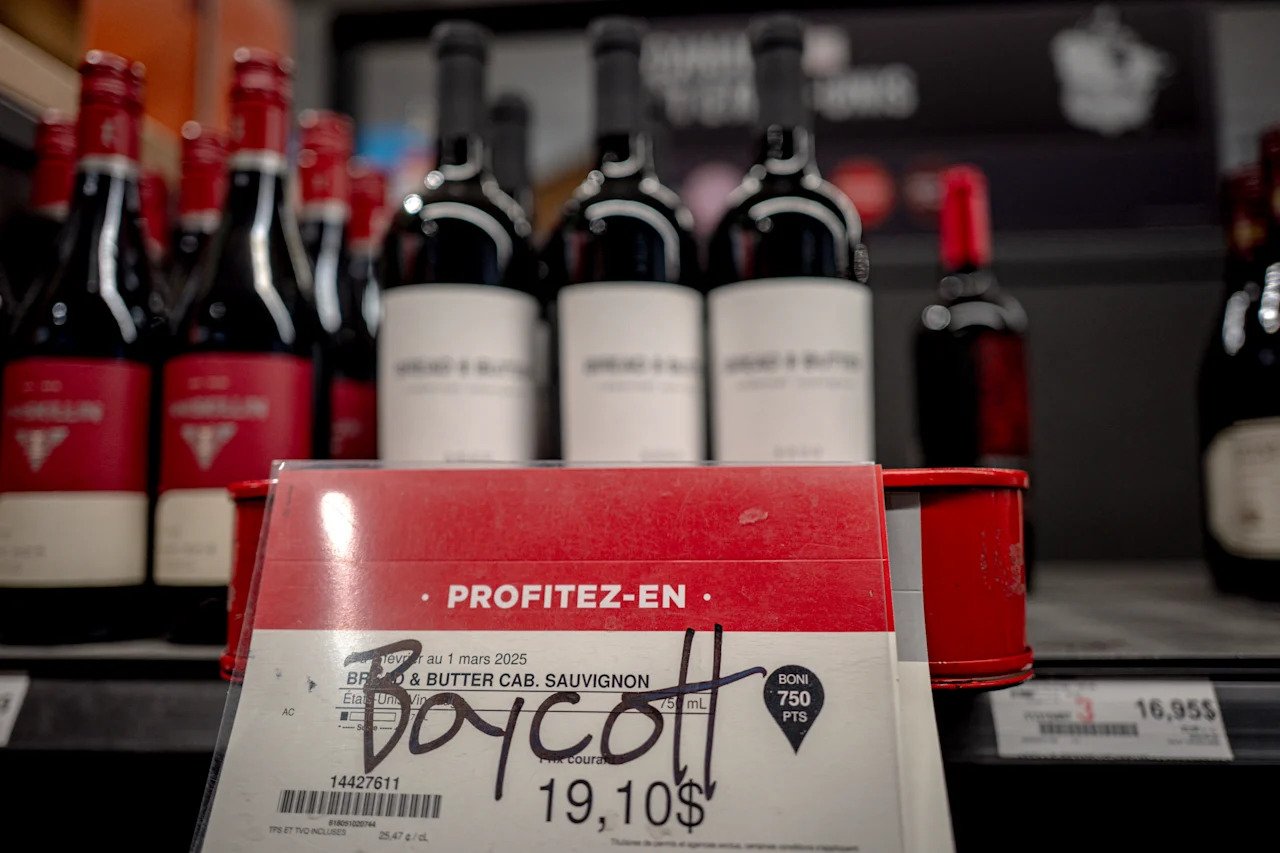
Trump tariffs live updates: Trump strikes deal with Japan, but EU digs in with over $100B counterattack
Key Points
- EU Tariff Threat: The European Union plans to impose 30% tariffs on over $100 billion of US goods, including Boeing planes and whiskey, if no trade deal is reached by August 1.**
- US Trade Deals: President Trump announced new trade agreements with Japan, the Philippines, and Indonesia, featuring reduced or zero tariffs on US exports and investments like Japan's $550 billion commitment.**
- Trump's Tariff Strategy: Trump emphasized trading tariff reductions for open markets, aiming for zero tariffs on US goods in major countries, as stated on Truth Social.**
- Automaker Concerns: Detroit automakers, including GM, Ford, and Stellantis, expressed concerns over the US-Japan deal, citing unfair tariff disparities compared to North American imports.**
- Market Reactions: European auto shares rallied after the US-Japan deal, with hopes for similar EU agreements, while companies like SAP faced declines due to trade war uncertainties.**
Summary
The European Union has threatened to impose 30% tariffs on over $100 billion of US goods, including Boeing aircraft and whiskey, if no trade deal is reached by August 1, in response to potential US tariffs of the same rate. Meanwhile, President Trump announced new trade agreements with Japan, the Philippines, and Indonesia, featuring significant investments and reduced tariffs on US exports, with Japan committing $550 billion. Trump also advocated for zero tariffs on US goods in exchange for market access, as tensions rise with larger trade partners like the EU, India, and Canada, where he has threatened tariffs of 25% to 35%. Detroit automakers criticized the US-Japan deal for favoring Japanese imports over North American ones, while European auto stocks rallied on hopes of similar deals. However, trade uncertainties negatively impacted companies like SAP, despite strong cloud revenue growth. The global trade landscape remains volatile as Trump plans to set blanket tariff rates for over 150 smaller trade partners and as ships rush to US ports to avoid impending tariffs on goods like copper.
yahoo
July 23, 2025
Stocks

Krispy Kreme, GoPro both soar as the next darlings of this summer's meme stock resurgence
Key Points
- GoPro (GPRO) and Krispy Kreme (DNUT) are the latest companies to experience significant gains in a meme stock resurgence, with GPRO up as much as 90% and DNUT up 70% in premarket trading on Wednesday, though gains later moderated to 40% and 26%, respectively.
- Both companies have seen recent revenue declines, with GoPro's Q1 2025 revenue down 13% to $134.3 million and Krispy Kreme's Q1 2025 revenue down 15% to $375.2 million compared to the previous year.
- This meme stock rally follows similar surges for Opendoor (OPEN) and Kohl's (KSS), which saw shares more than double earlier in the week, though both were down over 10% on Wednesday.
- Unlike other meme stocks with high short floats (Krispy Kreme at 28%, Opendoor at 21%, Kohl's at 49%), GoPro has a lower short float of less than 10%.
- Retail investors are driving this frenzy, reminiscent of the 2020-2021 GameStop (GME) rally, with GoPro and Krispy Kreme set to report earnings in August.
Summary
GoPro (GPRO) and Krispy Kreme (DNUT) have emerged as the latest focal points in a meme stock resurgence dominating markets this summer. On Wednesday, GoPro's stock surged up to 90% in premarket trading before settling at a 40% gain, while Krispy Kreme rose as much as 70% before moderating to a 26% increase. This follows significant rallies for Opendoor (OPEN) and Kohl's (KSS) earlier in the week, though both saw declines exceeding 10% on Wednesday. Despite the hype, both GoPro and Krispy Kreme reported revenue drops in Q1 2025, with GoPro down 13% to $134.3 million and Krispy Kreme down 15% to $375.2 million. GoPro, once a high-flying stock post its 2014 IPO, has lost nearly 98% of its value, while Krispy Kreme's stock remains above $5 after a pandemic peak. Unlike other meme stocks with high short floats, GoPro's is under 10%, compared to Krispy Kreme's 28%, Opendoor's 21%, and Kohl's 49%. This retail investor-driven frenzy echoes the 2020-2021 GameStop rally, with both companies set to report earnings in August.
yahoo
July 23, 2025
Stocks
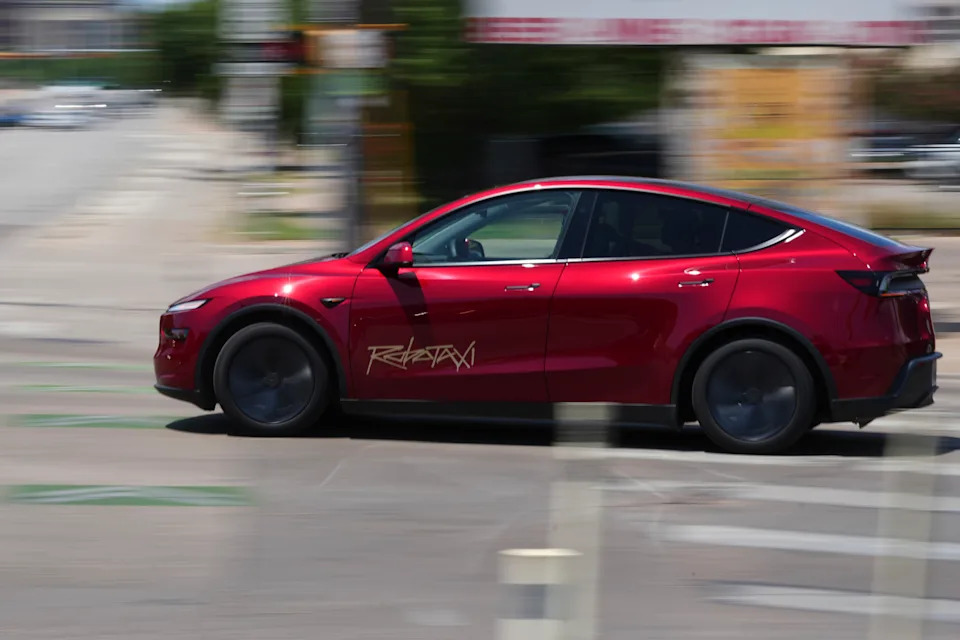
Tesla Q2 earnings preview: 3 things to watch
Key Points
- Tesla's core auto business, which drives the majority of its revenue and profit, is struggling with a projected Q2 revenue drop of 9% to $22.79 billion and a 13.5% decline in global vehicle deliveries year over year.
- Elon Musk's focus on robotaxis offers potential for future growth, with expanded testing in Austin, Texas, though Tesla lags behind competitors like Alphabet's Waymo and Uber in deployment.
- Investors are awaiting updates on a promised cheaper EV, with delays likely pushing the launch to Q4 2025, potentially disappointing Tesla bulls.
- Musk's political activities and a rocky relationship with President Trump, alongside tariffs and regional sales weaknesses, are dampening optimism for Tesla's stock, which is down 18% year to date.
- Analysts suggest weaker fundamentals and the need for capital to fund autonomous vehicle and AI initiatives could lead to a future share sale, a move unpopular with investors.
Summary
Tesla (TSLA) faces significant challenges as it approaches its Q2 2025 earnings report, with stock down 18% year to date amid a rocky relationship between CEO Elon Musk and President Trump, impacting late-2024 optimism. The core auto business, Tesla’s primary revenue source, is under pressure with expected Q2 revenue of $22.79 billion, a 9% drop, and a 13.5% decline in global deliveries. Regional weaknesses, competition, and consumer shifts to hybrids add to concerns. Meanwhile, Musk’s focus on robotaxis offers hope, with testing expanding in Austin, though Tesla trails competitors like Waymo and Uber. Investors are eager for updates on a cheaper EV, promised at around $30,000, but delays to Q4 2025 seem likely, potentially disappointing stakeholders. Additionally, tariffs on foreign cars, Musk’s political reputational hit, and the possibility of a future share sale to fund autonomous vehicle and AI initiatives further cloud Tesla’s outlook. As the S&P 500 and Nasdaq hit new highs, Tesla’s earnings call will be critical for insights into its struggling auto segment, robotaxi plans, and new vehicle timelines.
yahoo
July 23, 2025
Stocks
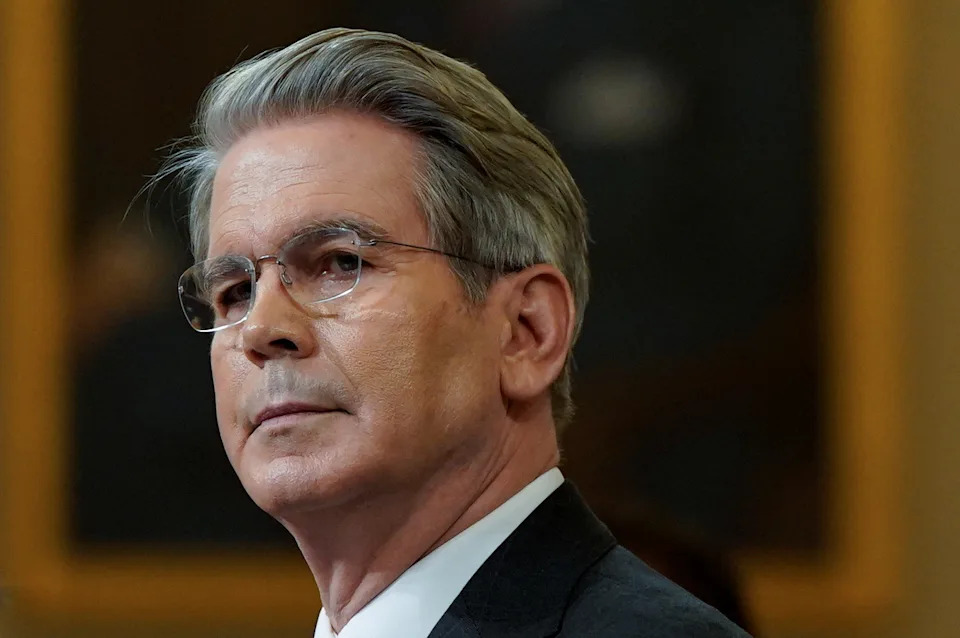
Bessent calls for internal review of Fed but doesn't think Powell needs to step down
Key Points
- Treasury Secretary Scott Bessent opposes immediate resignation of Fed Chair Jerome Powell, suggesting Powell can serve until his term ends in May or leave early if he chooses.
- Bessent criticizes the Federal Reserve's $2.5 billion headquarters renovation and calls for a review of its non-monetary policy operations, citing mission creep.
- He advocates for deeper reforms in bank regulations, particularly scrapping outdated capital requirements and a flawed dual capital structure proposed previously.
- Bessent supports the Fed’s independence in monetary policy but aligns with White House efforts to exert greater control over the Fed’s non-monetary operations, including bank supervision.
- As a potential candidate to replace Powell, Bessent is pushing for a broad reexamination of financial regulations to ease lending and boost the US economy.
Summary
Treasury Secretary Scott Bessent has taken a critical stance on the Federal Reserve, targeting its non-monetary operations and regulatory framework while stopping short of demanding Fed Chair Jerome Powell’s immediate resignation. Despite President Trump’s calls for Powell to step down, Bessent stated on Fox Business that Powell could serve until his term ends in May. However, Bessent intensified pressure on the Fed by questioning its $2.5 billion headquarters renovation and urging a review of its broader operations, arguing they jeopardize its monetary policy independence. At a Fed conference, he pushed for significant reforms in bank regulations, criticizing outdated capital requirements and a proposed dual capital structure. Bessent, a potential successor to Powell, supports the Fed’s autonomy in monetary policy but aligns with White House efforts to control other Fed functions, like bank supervision. Additionally, he aims to overhaul financial regulations to facilitate lending and stimulate economic growth, with the Treasury playing a central role in driving consensus and action. Recent proposals to rollback bank capital rules, such as the enhanced supplementary leverage ratio, signal further regulatory changes ahead, though their impact on banks may be limited. Bessent’s actions reflect a broader push for innovation and financial stability under the current administration.
yahoo
July 22, 2025
Stocks
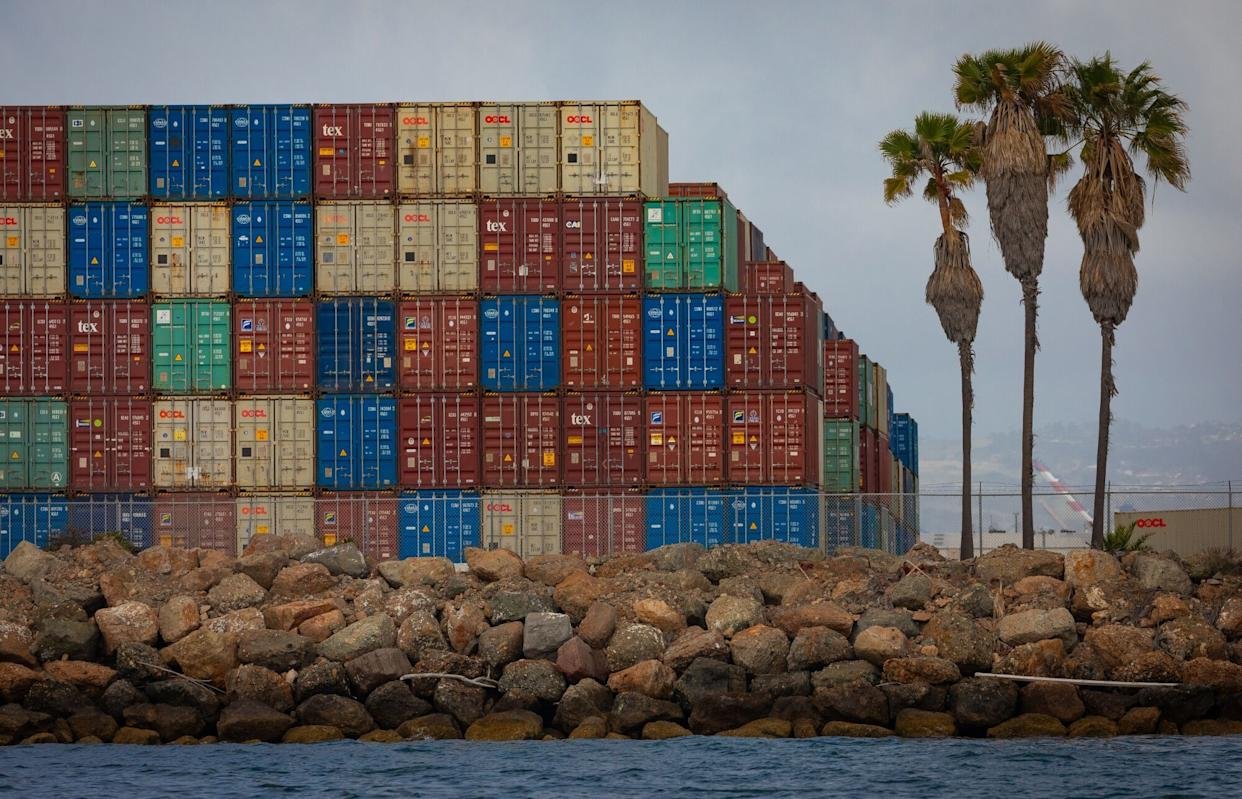
Trump Tax Law to Add $3.4 Trillion to US Deficits, CBO Says
Key Points
- Deficit Impact: President Trump's new tax and spending law will increase US deficits by $3.4 trillion over the next decade, as per the Congressional Budget Office (CBO) estimate. **
- Revenue and Spending Changes: The law results in a $4.5 trillion revenue decrease and a $1.1 trillion spending reduction through 2034, compared to the current-law baseline. **
- Health Care Coverage Loss: Approximately 10 million Americans are projected to lose health insurance by 2034 due to provisions like new Medicaid work requirements and funding limitations. **
- Economic Concerns: Economists and investors warn that the growing budget shortfall could raise borrowing costs and inflation, compounded by rising prices from tariffs. **
- Alternative Scoring: Using a current policy baseline, the law reduces deficits by $366 billion over a decade, a figure achieved through accounting maneuvers by lawmakers. **
Summary
President Donald Trump’s recently enacted tax and spending law, dubbed the “One Big Beautiful Bill,” is projected to add $3.4 trillion to US deficits over the next decade, according to the Congressional Budget Office (CBO). Signed on July 4, the legislation extends Trump’s 2017 income-tax cuts, offers business breaks, lifts state and local tax deduction caps, and temporarily eliminates taxes on tips and overtime. However, it also slashes spending by $1.1 trillion while cutting revenues by $4.5 trillion through 2034. The law includes Medicaid cuts and new work requirements, leading to an estimated 10 million Americans losing health insurance by 2034. Economists warn that the expanding budget shortfall, already significant, could increase borrowing costs and inflation, exacerbated by tariff-driven price rises impacting low-income families. The Trump administration claims tariff revenues will offset deficits, though concerns persist. An alternative scoring requested by Senate Republicans shows a $366 billion deficit reduction over a decade, achieved through accounting tactics that minimize the perceived cost of tax cut extensions. This law, reflecting much of Trump’s economic agenda, has sparked debate over its long-term fiscal and social consequences.
yahoo
July 22, 2025
Stocks
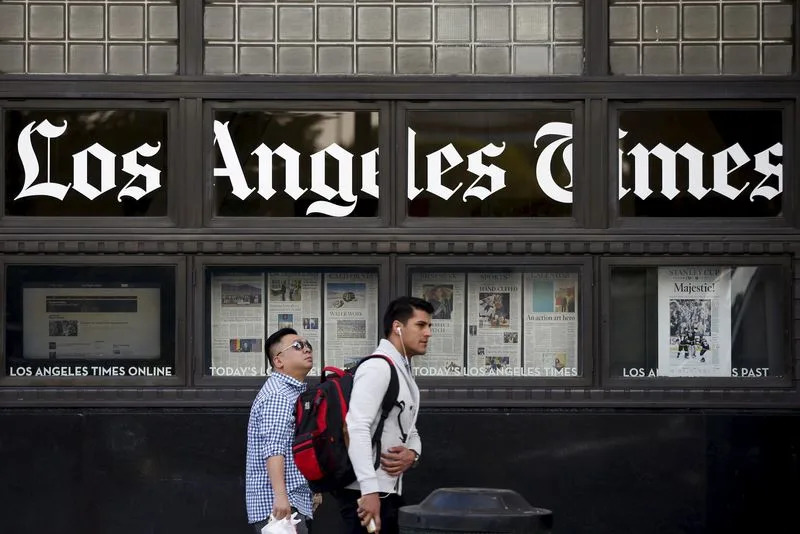
Los Angeles Times to go public, owner Soon-Shiong says
Key Points
- Los Angeles Times to Go Public: Owner Patrick Soon-Shiong announced plans to take the 143-year-old newspaper public within the next year, aiming to democratize ownership.**
- Public Ownership Model: The structure will be similar to the NFL's Green Bay Packers, allowing the public to own shares of the publication, with a partner organization assisting in the setup.**
- Recent Turmoil: The newspaper has faced significant challenges, including layoffs of over 20% of its newsroom staff in January and leadership exits amid annual losses of $30-40 million.**
- Editorial Controversy: The editorial editor resigned last year after Soon-Shiong reportedly blocked an endorsement of Kamala Harris, leading to subscriber backlash.**
Summary
The Los Angeles Times, a 143-year-old publication, is set to go public within the next year, as announced by its billionaire owner, Patrick Soon-Shiong, during an interview on "The Daily Show" with Jon Stewart. Soon-Shiong aims to democratize ownership of the newspaper by adopting a model similar to the public ownership structure of the NFL's Green Bay Packers, with a partner organization working on the framework. This decision comes after a tumultuous period for the LA Times, marked by significant financial losses of $30-40 million annually and substantial layoffs in January, where over 20% of the newsroom staff were cut. Leadership changes have also rocked the paper, with key exits including Executive Editor Kevin Merida and Managing Editor Sara Yasin. Additionally, controversy arose when the editorial editor resigned after Soon-Shiong reportedly blocked an endorsement of then-Vice President Kamala Harris, sparking subscriber backlash. Soon-Shiong, who acquired the LA Times in 2018 for $500 million from Tronc, is steering the newspaper toward a new era of public involvement amidst ongoing challenges. The LA Times did not immediately respond to Reuters for further details on the public offering plans.
yahoo
July 22, 2025
Stocks

Trump tariffs live updates: EU readies its reprisals as Trump pushes for higher tariffs
Key Points
- EU Retaliation Plans: The European Union is preparing stringent measures to counter potential US tariffs, with officials meeting to strategize reprisals and considering tools like the anticoercion instrument to restrict US trade and investment.**
- Trump's Tariff Threats: President Trump is pushing for higher tariffs on EU goods, proposing a minimum of 15-20% and threatening 30% duties by August 1, alongside tariffs on other trading partners like Brazil (50%), Canada (35%), and Mexico (30%).**
- Negotiation Challenges: Despite ongoing talks, Trump's demand for higher baseline tariffs has strained EU-US negotiations, with Germany aligning with France for a tougher stance, while time runs out before the August 1 deadline.**
- Impact on Industries: US companies like Cleveland-Cliffs praise tariffs for supporting domestic industries, while retailers face uncertainty over import costs and availability of goods ahead of the holiday season.**
- Global Trade Dynamics: Treasury Secretary Scott Bessent emphasizes quality over speed in trade deals, hinting at possible deadline extensions, while countries like Brazil prepare contingency plans for potential tariff impacts.**
Summary
The European Union is gearing up for a potential trade war with the US as President Trump pushes for higher tariffs, threatening a no-deal outcome by the August 1 deadline. The EU is drafting retaliatory measures, including restrictions on US digital services and public procurement access, while member states like Germany signal readiness for conflict if negotiations fail. Trump’s proposed tariffs range from 15-20% on EU goods to 50% on Brazilian imports, disrupting months of talks and affecting global trade partners like Canada and Mexico. US industries, such as steelmaker Cleveland-Cliffs, welcome the protectionist policies, but retailers struggle with uncertainty over import costs for holiday goods. Treasury Secretary Scott Bessent prioritizes high-quality deals over rushed agreements, leaving room for deadline flexibility, while countries like Brazil brace for economic redirection if tariffs hit. The escalating tensions highlight the delicate balance of trade negotiations and the broader economic implications worldwide.
yahoo
July 21, 2025
Stocks
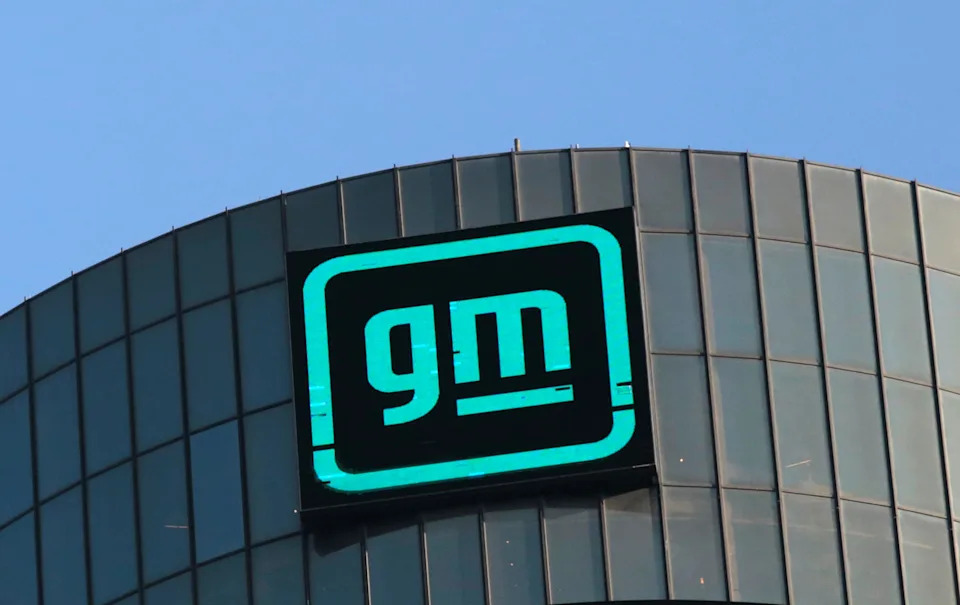
Everyone wants to be a bank now. Banks aren’t happy about it.
Key Points
- Automakers and Crypto Firms Applying for Banking Charters: Companies like General Motors, Stellantis, Nissan, Circle, and Ripple are seeking US banking charters, including industrial loan company (ILC) charters and national trust banking charters, to offer banking services with potentially lighter regulatory oversight.**
- Banking Industry Opposition: Traditional banks and lobbying groups like the Bank Policy Institute and ICBA oppose these charters, citing regulatory double standards, risks, and historical failures like GMAC’s 2008 collapse, arguing they threaten consumer safety and market stability.**
- Regulatory Shifts Under Trump Administration: The Trump administration is reexamining financial regulations, potentially loosening rules for banks and lowering entry barriers for non-traditional entrants, while the FDIC is adjusting policies for ILC approvals.**
- Crypto and Fintech Growth: Crypto firms like Circle and Ripple are applying for national trust charters to gain credibility and comply with new legislation like the GENIUS Act, while even big banks like JPMorgan are exploring stablecoin-related innovations.**
Summary
A growing number of non-banking companies, including automakers like General Motors and Stellantis, and cryptocurrency firms like Circle and Ripple, are applying for US banking charters, sparking tension with traditional banks. These new entrants seek charters such as industrial loan company (ILC) status or national trust banking charters, which could allow them to offer banking services with less stringent regulations. Banks and lobbying groups like the Bank Policy Institute and ICBA oppose this, arguing it creates a regulatory double standard and poses risks, citing past failures like GMAC’s 2008 collapse. Meanwhile, the Trump administration is reviewing financial regulations, potentially easing rules for banks and new entrants alike, while the FDIC is adjusting its approach to ILC approvals. Crypto and fintech firms are also pursuing charters to gain credibility and comply with new laws like the GENIUS Act, as even major banks like JPMorgan explore stablecoin innovations. This clash over banking access highlights broader concerns about competition, consumer safety, and the evolving financial landscape.
yahoo
July 20, 2025
Stocks
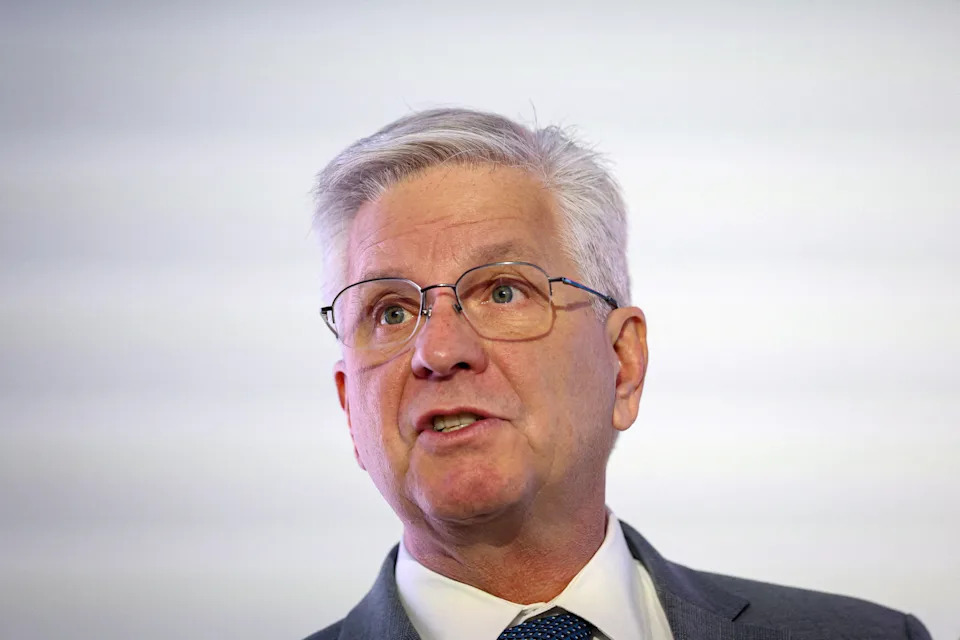
Tesla, Alphabet highlight earnings rush as market hovers near record highs: What to know this week
Key Points
- Market Performance: The S&P 500 and Nasdaq Composite are near record highs, with the Nasdaq up over 1.6% and the S&P 500 up 0.7% last week, despite tariff concerns and monetary policy debates.**
- Earnings Season: 112 S&P 500 companies, including Alphabet, Tesla, and Chipotle, are set to report quarterly results, with Big Tech expected to drive significant earnings growth.**
- Federal Reserve Policy: Fed governor Christopher Waller advocates for a July rate cut, though market expectations for a cut have dropped to a 5% probability, influenced by sticky inflation and strong economic data.**
- Economic Data: A quiet week for economic releases, with focus on services and manufacturing sector updates as the Federal Reserve enters a blackout period before its July meeting.**
Summary
The S&P 500 and Nasdaq Composite are close to record highs, showing resilience amid escalating tariffs and monetary policy debates, with the Nasdaq gaining over 1.6% and the S&P 500 up 0.7% last week. A significant earnings season is underway, with 112 S&P 500 companies, including Alphabet, Tesla, and Chipotle, set to report, and Big Tech expected to lead with a 14.1% earnings growth compared to the rest of the index at 3.4%. Federal Reserve governor Christopher Waller has called for an interest rate cut in July, citing inflation near target, though market expectations for a cut have diminished to just 5% due to persistent inflation and robust economic indicators like retail sales. Meanwhile, a quiet week of economic data will focus on manufacturing and services sectors as the Fed enters a blackout period before its July 29-30 meeting. Despite strong earnings from companies like Netflix and big banks, stock reactions have been muted due to high valuations and elevated expectations, raising concerns among strategists about potential pullbacks if results disappoint. The market anticipates a broadening of earnings growth beyond Big Tech in coming quarters, which could support a more sustained rally if cyclical sectors show improvement.
yahoo
July 20, 2025
Stocks
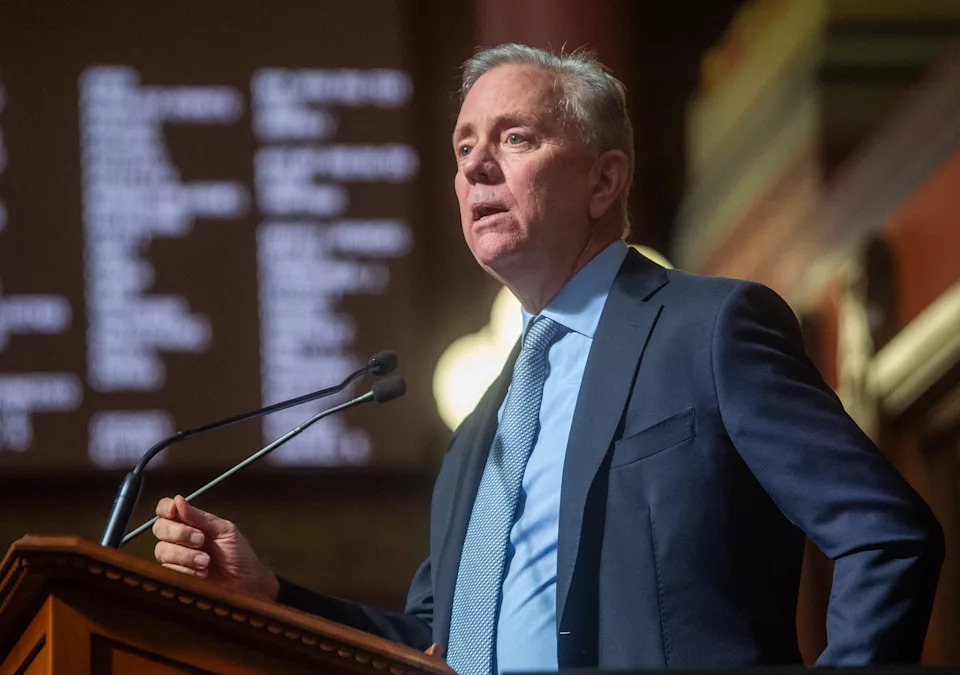
Connecticut wants to make generic GLP-1s. Will RFK Jr. lend a hand?
Key Points
- Connecticut's New Law: Connecticut passed a law signed by Gov. Ned Lamont on July 8 to reduce state spending on weight-loss drugs like GLP-1s (e.g., Ozempic, Wegovy, Mounjaro, Zepbound) by petitioning the US Health and Human Services (HHS) to use federal patent rights under 28 US 1498 to produce generics.**
- Cost Concerns: The state spent $140 million on these drugs in fiscal year 2024 for its HUSKY Health program, prompting this innovative approach to control costs while other states restrict or eliminate coverage.**
- Federal Collaboration: The law allows Connecticut to form a consortium with other states to contract generic manufacturers, with potential royalties paid to original drugmakers at reduced rates (e.g., 7.5%-10% of production costs).**
- Political and Legal Uncertainty: Gov. Lamont and experts express caution about overreach of federal patent law, and the response from HHS Secretary Robert F. Kennedy Jr. remains uncertain, with past uses of the law showing mixed outcomes.**
- Market Dynamics: With drug prices easing due to increased supply, compounding markets, and looming generic competition (e.g., in Canada), Connecticut’s move comes at a potentially impactful time for patent law application.**
Summary
Connecticut has enacted a groundbreaking law signed by Gov. Ned Lamont on July 8 to curb the soaring costs of weight-loss drugs like GLP-1s (e.g., Novo Nordisk’s Ozempic and Eli Lilly’s Mounjaro), which cost the state $140 million in 2024 for its HUSKY Health program. The legislation directs the Commissioner of Social Services to petition HHS Secretary Robert F. Kennedy Jr. to invoke federal patent rights under 28 US 1498, allowing generic production of these drugs with royalties paid to original manufacturers at reduced rates. This approach, likened to eminent domain, could involve a consortium of states to contract manufacturers, with other states already showing interest. While some states have limited or cut coverage, Connecticut expanded it in 2023 and now seeks a sustainable solution. However, Gov. Lamont and legal experts caution about potential overreach of federal law, and the response from HHS remains uncertain. Past uses of this patent law, such as for Hepatitis C drugs in Louisiana and anthrax medication post-9/11, show mixed results, often leading to negotiated deals. Amid easing drug prices, a growing compounding market, and upcoming generic competition in Canada, Connecticut’s strategy arrives at a critical juncture, though political will and legal challenges could impact its success. Experts and advocates are keenly observing whether this could set a precedent for addressing high drug costs nationwide.
yahoo
July 20, 2025
Stocks
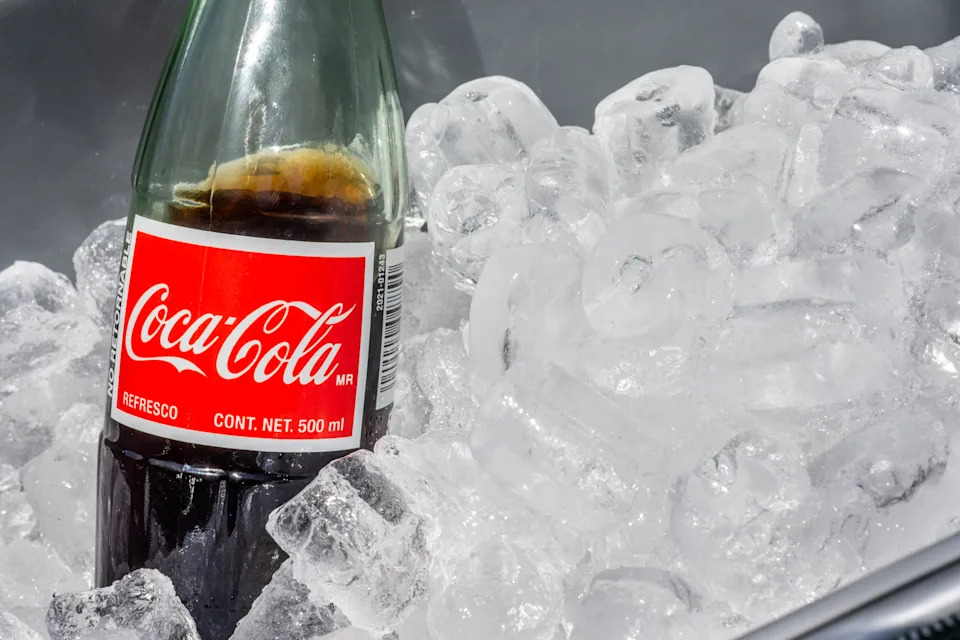
Big food companies undergo 'self reflection' on business future as deals sweep the sector
Key Points
- Industry Flux: Big food companies like Kraft Heinz, PepsiCo, and Coca-Cola are undergoing significant self-reflection due to shifting consumer tastes, stalled growth, and regulatory pressures.**
- Acquisitions and Breakups: Companies are responding with major deals, such as PepsiCo's acquisition of Poppi and Siete Foods, and potential breakups like Kraft Heinz, while Kellogg's split entities have been acquired by private players.**
- Performance Struggles: Core businesses are underperforming, with PepsiCo reporting volume declines in its North America beverage segment and Kraft Heinz shares dropping over 65% since its merger.**
- Investor Pressure: Activist and large investors are pushing for changes to boost stagnant share prices, as seen with Kellogg's breakup yielding a 40% gain for investors.**
- Strategic Shifts: Acquisitions target higher-growth, smaller brands aligned with industry trends, while breakups aim to streamline portfolios and enhance value.**
Summary
Big food companies are grappling with an uncertain future as consumer preferences shift, growth stagnates, and regulatory pressures mount. Industry giants like Kraft Heinz, PepsiCo, and Coca-Cola are reevaluating their US portfolios amid declining performance, with PepsiCo reporting a 2% volume drop in its North America beverage business. Strategic moves include acquisitions of smaller, high-growth brands like Poppi and Siete Foods by PepsiCo, and Hershey’s purchase of Lesser Evil. Meanwhile, breakups are on the table, with Kraft Heinz potentially splitting its condiments and grocery segments, and Kellogg’s recent division into WK Kellogg and Kellanova resulting in acquisitions by Ferrero and Mars Candy, respectively. Analysts note a reactive approach as core businesses falter, prompting companies to buy growth or restructure. Investor pressure for better returns is also driving change, with Kellogg’s breakup yielding significant gains. This period of flux, described as unusual for a typically stable sector, reflects a broader industry trend of adaptation and transformation.
yahoo
July 20, 2025
Stocks
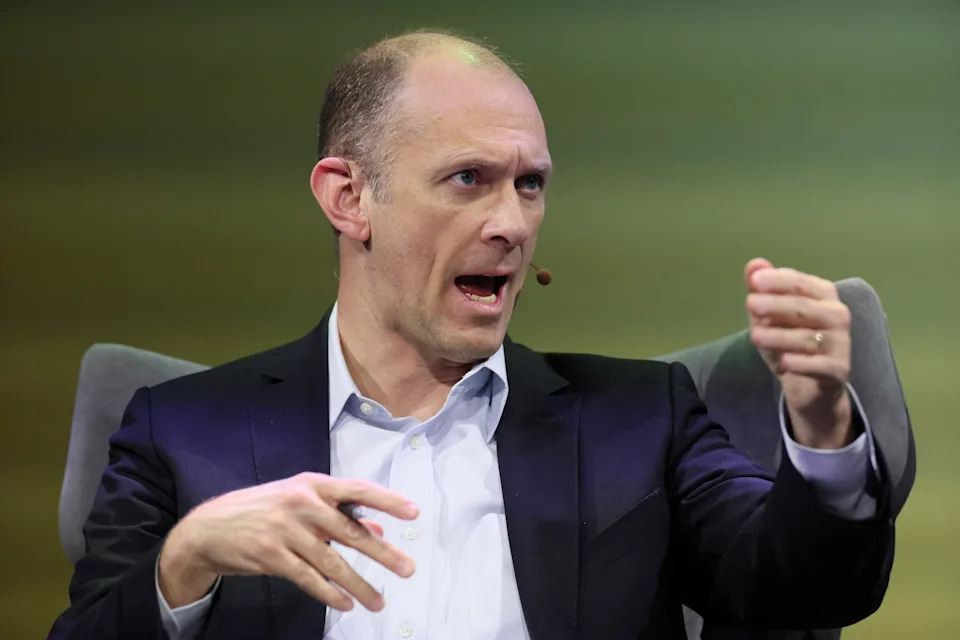
Fed's Goolsbee defends Powell as 'totally honorable guy' amid White House attacks
Key Points
- Central Bank Independence: Chicago Federal Reserve President Austan Goolsbee strongly supports central bank independence, emphasizing its critical role in maintaining economic stability and low inflation, as evidenced by poorer economic outcomes in countries without such independence.**
- Support for Jerome Powell: Goolsbee expressed admiration for Fed Chair Jerome Powell, calling him a “totally honorable guy” and a “first ballot Hall of Famer,” amid political pressure from President Trump and his allies.**
- Caution on Interest Rates: Goolsbee echoed Powell’s cautious stance on cutting interest rates, citing uncertainties around the impact of Trump’s tariffs on inflation and the need for more data before making decisions.**
- Tariff Impacts: He noted that while tariffs are increasing goods prices, the effect hasn’t spilled over to services, maintaining a “wait and see” approach to assess broader inflationary pressures.**
Summary
Chicago Federal Reserve President Austan Goolsbee recently defended central bank independence and Federal Reserve Chair Jerome Powell amid political pressure from President Trump and his allies. In a Yahoo Finance interview, Goolsbee stressed that independence from political interference is vital for economic stability, citing higher inflation and worse growth in countries lacking it. He praised Powell as honorable and highly capable, despite Trump’s frustration with Powell’s cautious approach to interest rates and concerns over potential inflation from tariffs. Goolsbee mirrored Powell’s “wait and see” stance on rate cuts, noting that while tariffs are raising goods prices, the impact hasn’t extended to services. He highlighted the uncertainty caused by staggered tariff implementations and geopolitical factors, suggesting that rate cuts depend on clearer inflation data. Meanwhile, internal Fed divisions persist, with Governor Christopher Waller advocating for a rate cut in July, contrasting with market expectations of a hold until September. Goolsbee refrained from predicting specific rate cut timelines, emphasizing the need to monitor inflation trends closely.
yahoo
July 19, 2025
Stocks
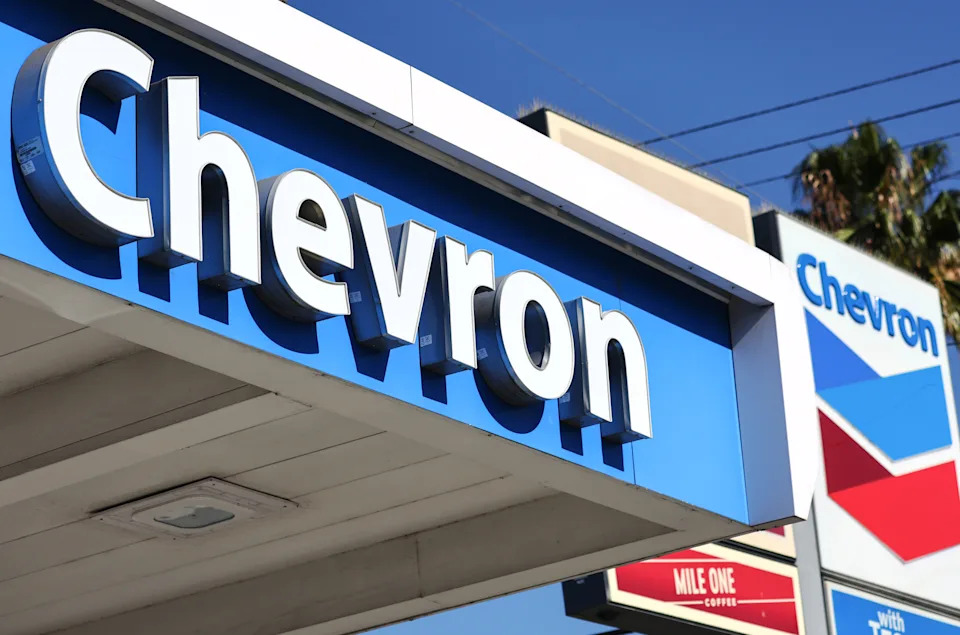
Chevron's $53B deal for Hess clinches access to a 'once-in-several-lifetimes' asset for the oil giant
Key Points
- Chevron (CVX) is set to finalize a $53 billion all-stock acquisition of Hess (HES), gaining access to Hess' 30% stake in the Stabroek offshore block in Guyana, which holds over 11 billion barrels of oil.
- An arbitration panel at the International Chamber of Commerce in Paris ruled in favor of Chevron, allowing the deal to proceed despite opposition from ExxonMobil (XOM), which holds a 45% stake in the same block.
- The deal is seen as transformative for Chevron, enhancing its growth profile, driving free cash flow, and providing geographic diversification, amidst recent financial challenges and workforce reductions.
- ExxonMobil, partnered with Hess since 2014, contested the merger citing preemptive rights, but ultimately respected the arbitration outcome while expressing disagreement.
- This merger is one of the largest in the energy sector recently, following Exxon’s $60 billion acquisition of Pioneer Natural Resources, and may spur further industry consolidation.
Summary
Chevron (CVX) is poised to complete a $53 billion acquisition of Hess (HES) after nearly two years of contention, securing a 30% stake in Guyana’s Stabroek offshore block, estimated to contain over 11 billion barrels of oil. An arbitration panel in Paris ruled in Chevron’s favor, sidelining ExxonMobil (XOM), which holds a 45% stake and contested the deal citing preemptive rights. Despite initial stock gains, Chevron’s shares fell 1.5% post-ruling. The merger, one of the largest in the energy sector recently, is expected to bolster Chevron’s growth, free cash flow, and global diversification, especially as it lags behind Exxon in earnings and stock performance. Chevron’s leadership views the deal as a strategic enhancement for long-term shareholder value. Meanwhile, Exxon, partnered with Hess since 2014, expressed disagreement but respected the arbitration process. The deal’s significance extends beyond Chevron, contributing to Guyana’s economic boom and potentially triggering further industry mergers, as noted by experts. This follows Exxon’s $60 billion acquisition of Pioneer Natural Resources, highlighting a trend of major consolidation in the oil and gas sector amidst evolving energy demands.
yahoo
July 19, 2025
Stocks
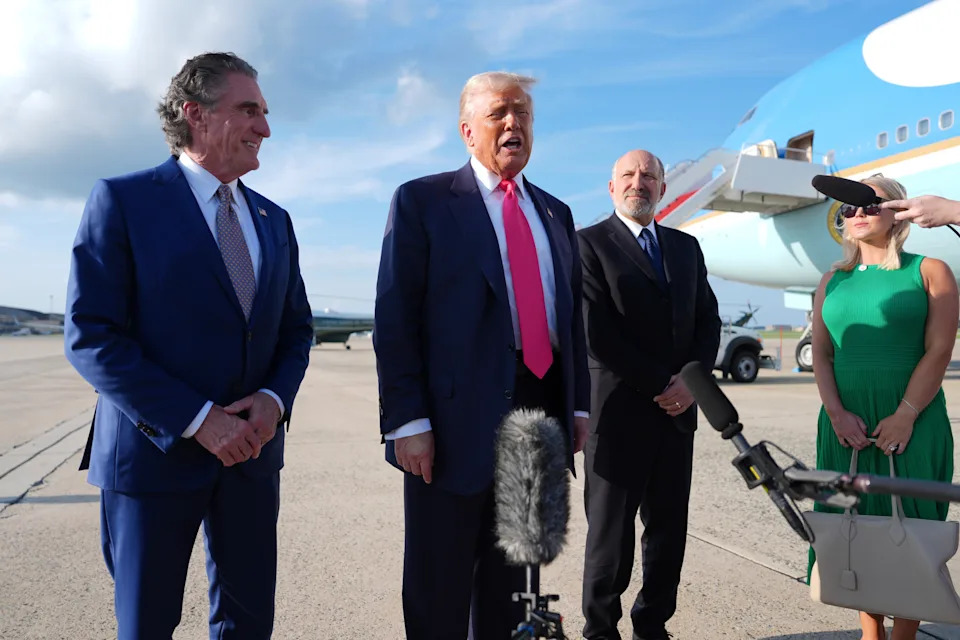
For Sale: Trump is leveraging power of his office to reap profits for family businesses
Key Points
- Unprecedented Personal Gain: President Donald Trump has leveraged his office for personal financial gain in his second term, amassing hundreds of millions through family businesses in crypto, real estate, and merchandise.**
- Conflicts of Interest: Trump family ventures, including cryptocurrencies and overseas deals, often involve entities with interests before the federal government, raising significant ethical concerns.**
- Lack of Oversight: With a Republican-controlled Congress, loyalist administration, and Supreme Court immunity rulings, Trump faces little immediate accountability for these conflicts.**
- Rejection of Past Promises: Trump's actions contradict his "drain the swamp" pledge, with no blind trust for assets and direct promotion of family business interests from the White House.**
- Cryptocurrency Focus: Trump's shift from crypto skeptic to advocate, including launching family-run crypto ventures, exemplifies the intertwining of personal profit and policy deregulation.**
Summary
In his second term, President Donald Trump has unprecedentedly used his office for personal financial gain, with Trump family businesses earning hundreds of millions from cryptocurrencies, overseas deals, and merchandise like bibles and shoes. Ventures such as a crypto coin worth $320 million and a $2 billion foreign investment highlight the scale of these profits, often from entities with federal interests, raising ethical concerns. Critics, including academics and Democrats, decry this as corruption, contrasting it with past presidents’ use of blind trusts to avoid conflicts. Despite his earlier "drain the swamp" promise, Trump faces little oversight due to a supportive Congress, loyal administration, and Supreme Court immunity rulings. His direct promotion of family businesses, including crypto initiatives he once called a scam, underscores a policy-profit overlap, with plans to deregulate the industry further. While the White House insists Trump’s actions aim to position the U.S. as a crypto leader, the intertwining of personal and presidential interests remains a central controversy of his tenure.
yahoo
July 18, 2025
Stocks

Meta Hires Two Key Apple AI Experts After Poaching Their Boss
Key Points
- Meta Platforms Inc. has hired key AI researchers Mark Lee and Tom Gunter from Apple Inc. for its Superintelligence Labs team, following the recruitment of their former boss, Ruoming Pang.
- Meta is aggressively recruiting AI talent, offering substantial compensation packages, with Pang receiving over $200 million and Gunter joining a group with packages exceeding $100 million.
- Apple's AI team, the Apple Foundation Models (AFM), is experiencing turmoil, with potential reliance on external models like OpenAI’s ChatGPT or Anthropic’s Claude for Apple Intelligence features.
- Meta's CEO Mark Zuckerberg has prioritized AI, planning to invest hundreds of billions in computing power to develop superintelligence, and placing top AI hires near his desk for collaboration.
- Apple is attempting to retain talent with raises, but these are significantly lower than Meta’s offers, contributing to ongoing staff departures.
Summary
Meta Platforms Inc. is intensifying its pursuit of AI dominance by hiring key researchers Mark Lee and Tom Gunter from Apple Inc. for its Superintelligence Labs team, shortly after recruiting their former boss, Ruoming Pang, with a compensation package exceeding $200 million. This reflects a broader tech industry race for AI talent, with Meta, under CEO Mark Zuckerberg, prioritizing artificial intelligence through massive investments in personnel and infrastructure to rival companies like OpenAI and Google. Meanwhile, Apple’s AI division, the Apple Foundation Models team, faces uncertainty as it considers integrating external models such as ChatGPT or Claude for features like Siri, while struggling to retain staff against Meta’s lucrative offers. Despite Apple’s efforts to offer raises, the disparity in compensation—Meta’s packages often multiples higher—continues to drive talent away. Zuckerberg’s vision includes investing hundreds of billions in computing power to achieve superintelligence, with top hires working closely with him at Meta’s headquarters, underscoring his commitment to building an elite AI team.
yahoo
July 18, 2025
Stocks
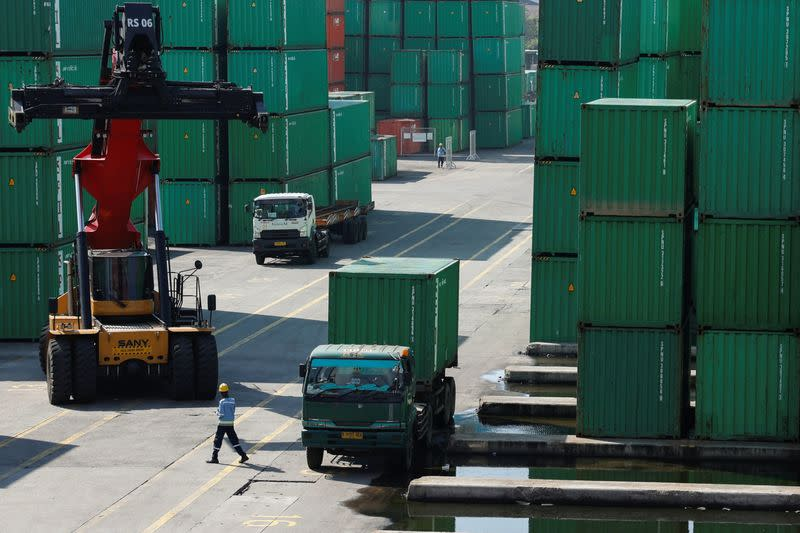
China says successful US trade talks make return to tariff war unnecessary
Key Points
- China's Commerce Minister Wang Wentao emphasized the need to stabilize trade relations with the U.S., urging the U.S. to act responsibly as a major power.
- China faces an August 12 deadline to finalize a tariff agreement with the U.S., with potential global supply chain disruptions if no deal is reached.
- Recent negotiations in Europe highlighted that a tariff war is unnecessary, with Wang advocating for dialogue to manage differences.
- Nvidia will resume selling H20 AI chips to China, a decision linked to broader negotiations on rare earths exports.
- Wang noted that forced decoupling between the U.S. and China is impractical, as both nations rely on irreplaceable goods and services.
Summary
China's Commerce Minister Wang Wentao expressed a strong desire to stabilize trade relations with the United States, emphasizing the economic interdependence between the two nations despite recent tensions. Speaking to reporters, Wang urged the U.S. to act as a responsible superpower and highlighted the importance of dialogue, citing productive talks in Geneva and London as evidence that a tariff war is avoidable. With an August 12 deadline looming for a durable tariff agreement, failure to reach a deal could disrupt global supply chains with duties exceeding 100%. Wang also met with Nvidia CEO Jensen Huang, who confirmed the resumption of H20 AI chip sales to China, a move tied to negotiations on rare earths, which saw a 32% export increase in June. Despite high U.S. tariffs on China at 53.6%, Wang stressed that forced decoupling is unfeasible due to the irreplaceable nature of traded goods and services. China remains committed to avoiding a trade war but is prepared to defend its interests if necessary, seeking a path toward healthy and sustainable economic ties with the U.S. through continued communication and cooperation.
yahoo
July 18, 2025
Stocks